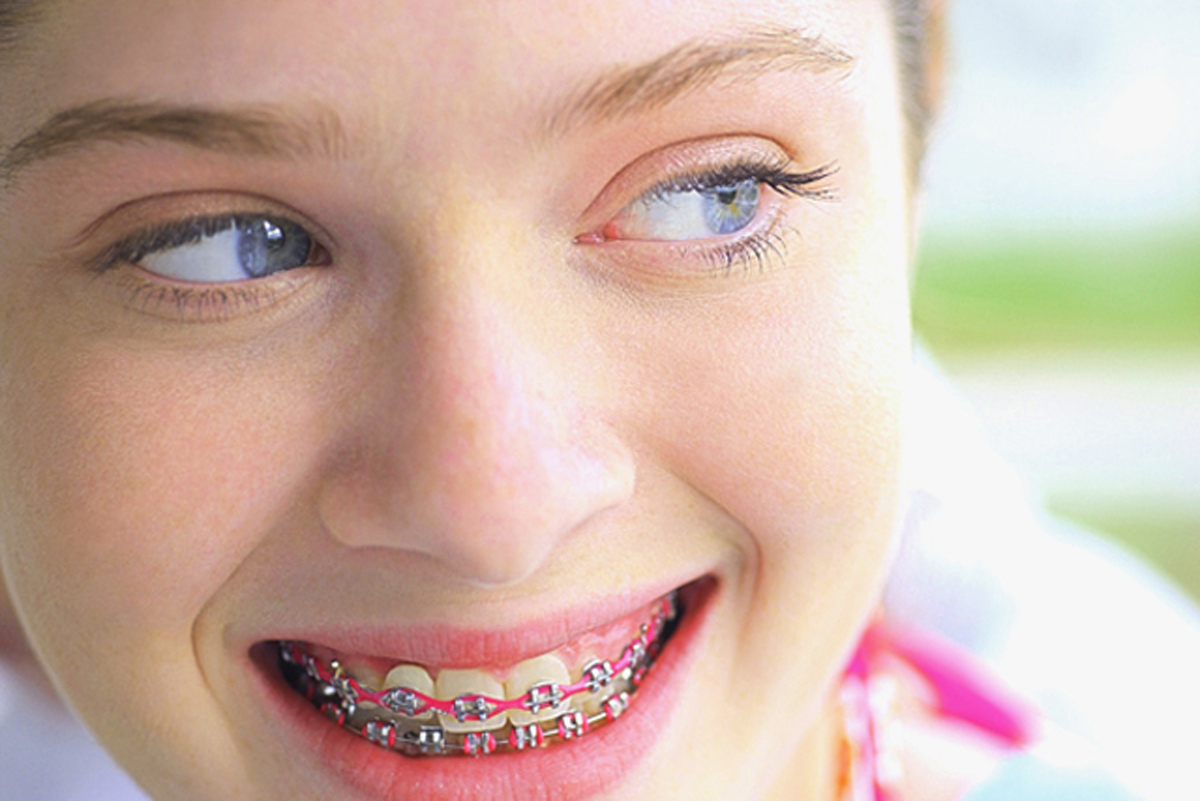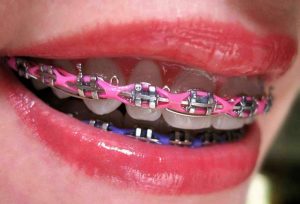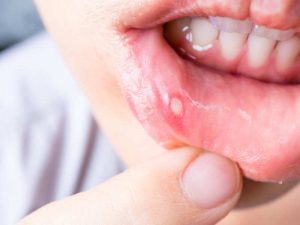Sick and tired of your crooked teeth? Looking forward to smiling like a Hollywood movie star? Then orthodontic braces are your chance for success. Knowing how to prepare for getting the braces is a good way to make the transition from bare teeth to your orthodontic treatment.
In this article I’ll try to cover the entire process from getting a good orthodontist, to professional cleaning and preparing for the first day you will wear your new braces.
Whether it’s Invisalign, Damon braces or standard metal braces, feeling uneasy is normal. The best way to avoid this is to get educated as much as possible and understand the entire process.
Hence our collection of braces tips, which should help you understand the main types of braces, benefits of wearing orthodontic braces and even how much money you’ll spend for your orthodontic treatment.
So, let’s proceed …
Why do we need braces anyway?
The orthodontic treatment is the way to fix your bad bite and straighten your teeth, so that they are easier to clean and also look gorgeous, when you smile. Whether you have buck teeth (overbite), underbite or any type of orthodontic issues, braces are a sure way to repair your occlusion (bite) and teeth position.
After wearing braces, your bite should be better, teeth properly aligned and your smile absolutely gorgeous.
Find a good orthodontist
It’s the first logical step, since you cannot wear braces without a good orthodontist. Beware! Not all dentists are orthodontists, it takes another few years in school for them to provide you with such treatment.
There are a multitude of direct-to-consumer orthodontic options (you take a picture of your teeth, an impression of them and then get the aligners by mail, without the hassle of visiting an orthodontist’s office), which promise better deals and a faster process.
Find out what the American Association of Orthodontists have to say about this type of service.
Ideally ask around: your friends surely had braces. Maybe their kids are undergoing this treatment. Look around in your city. As soon as you find few recommendations, go and visit the orthodontist office.
Most orthodontists provide a free first consultation, in order to discuss your case and prepare an outline for your orthodontic treatment.
Ask them about your options, their successes, what braces they recommend.
You will like one of these orthodontists and you can choose to go forward this way. As soon as you get a good orthodontist, it’s time to fix your teeth for the braces.
Go for a professional cleaning
Your braces need to sit on perfectly clean and healthy teeth, otherwise there’s a huge risk of tooth decay and cavities once you are well into your orthodontic treatment. This means wasting some time (and probably money) to fix the ‘sick’ teeth and get back in braces.
Any decent orthodontist will tell you that your teeth need to be in excellent condition prior to the treatment.
So, the first step is to get a professional cleaning done. This removes any tartar and allow your dentist to see if you have any cavities that need taking care of.
Fix your teeth and have an x-ray
After your professional cleaning, your dentist will carefully treat your teeth and gums. You’ll also have an x-ray done.
Based on this, the orthodontis will be able to fully assess your dental case and get ready for your treatment. In some cases impressions might be also taken (for lingual braces, such Incognito, or Invisalign).
Only when your teeth are perfectly healthy and in great shape, you can start your orthodontic treatment and not have to worry about further complications.
There is also an option to have teeth extracted, so that you can have enough room for the rest to properly align. If you are using CPAP after tooth extraction, you need to beware of getting CPAP dry socket.
Mentally prepare for the big day
There’s little time until you’ll get braces on. Use this time to properly get educated on how the orthodontic treatment works and what to expect. Read our orthodontic blog and also the nice forum at ArchWired. It’s a very nice community you should check.
Find out about the various orthodontic treatment options (Damon, Invisalign, Incognito etc.), how braces are put on, how to avoid tooth soreness etc.
By now your orthodontist has already mapped out your plan and options. Don’t worry, you are in the hands of an amazing professional and, if you did your due diligence, one of the best orthos’ is handling your case.
Prepare for some soreness and slight discomfort
Braces are amazing tools to craft your new healthy smile, but they are a tad tricky to adjust to, at first.
You will feel tightness in your teeth, even soreness (especially the second day). Whether it’s metal braces or Invisalign, soreness is normal.
And, without sounding masochistic, we need that soreness. That means your new braces are starting to do their job.
Braces need to “dislocate” your teeth from their current position on the arch (which we know it’s not the optimal one already) and slowly “migrate” them to their new healthy position.
Some patients feel little discomfort, others are in pain for 1-2 days. For this we have Tylenol or whatever your orthdontist prescribed. Don’t worry, it will get better.
Stock up on orthodontic supplies
Nobody said the first day in braces will be a walk in the park, but we do have a lot of orthodontic supplies that make our lives, as patients, a breeze.
From pain killers (which you’ll get recommendations from your orthdontist) to dental wax (to cover the protruding wires) and Orajel (to numb painful teeth), there’s a plethora of items you will use to help you go through the discomfort.
Keep on taking great care of your teeth
Your orthodontist put braces on perfectly clean and healthy teeth. No professional in his right minds would allow you to wear braces with plaque on your teeth or cavities.
But now, as you are wearing braces, brushing and flossing are extremely important, as you can develop cavities during your orthodontic treatment. And that would be unfortunate, as you will need to have some brackets removed, teeth repaired and brackets put on again.
More visits to your orthodontist and more money out of your pocket.
This is why oral hygiene needs to be your main priority, now that you got your braces on. Floss regularly and brush your teeth carefully.
Enjoy some of your favorite meals
Once you are in braces, chances are you’ll have an extensive list of foods to avoid. This is why you should eat now what you like, if it’s on that list.
Nuts, caramel and sticky foods, it’s now or .. never. At least until you have the braces on.
Few days after getting the braces on, your teeth will be sore, so there’s no way you can bite and chew too well (unless you want to scream in pain). You’ll eat purees and soft food, for 1-2 days, until the soreness is gone and you can resume your normal eating habits.
Even after feeling better, with your braces on, stay away from foods that can make your brackets pop out or wires protrude. If you are wearing Invisalign, some foods and beverages can stain the aligners and make them look yucky.
In this case the recommendation is to avoid coffee, wine or soda, while wearing the aligners and maybe quench your thirst with these when you take them off to eat. Then properly brush your teeth and floss, CLEAN your aligners and put them on again.
These are just few ideas to help you prepare for getting braces on. Don’t worry, it’s not as bad as you might expect it to be. Best of luck and keep us posted on your progress.



